- Understanding Gooseberries
- Varieties of Gooseberries
- Growing Gooseberries
- Types of Gooseberries
- Benefits of Growing Gooseberries
- Choosing the Right Location
- 1. Sunlight
- 2. Soil Quality
- 3. Air Circulation
- 4. Protection from Wind
- 5. Accessibility to Water
- Ideal Sun Exposure for Gooseberries
- Full Sun:
- Partial Shade:
- Shade:
- Soil Requirements for Gooseberries
- Preparing the Planting Hole
- Digging the Right Size Hole
- Adding Amendments to the Soil
- 1. Organic Matter
- 2. pH Adjustments
- 3. Nutrient Boosters
- Planting Gooseberries
- 1. Choose a suitable location
- 2. Prepare the soil
- 3. Dig the planting hole
- 4. Place the gooseberry bush
- 5. Backfill and firm the soil
- 6. Mulch and water
- 7. Prune and train
- Question-answer:
- What are gooseberries and why should I plant them?
- When is the best time to plant gooseberries?
- How do I properly prepare the hole for planting gooseberries?
- Do gooseberries require a lot of water?
- Can gooseberries tolerate full sun or do they prefer partial shade?
- How long does it take for gooseberries to bear fruit?
- Video: How to take a Gooseberry cutting.
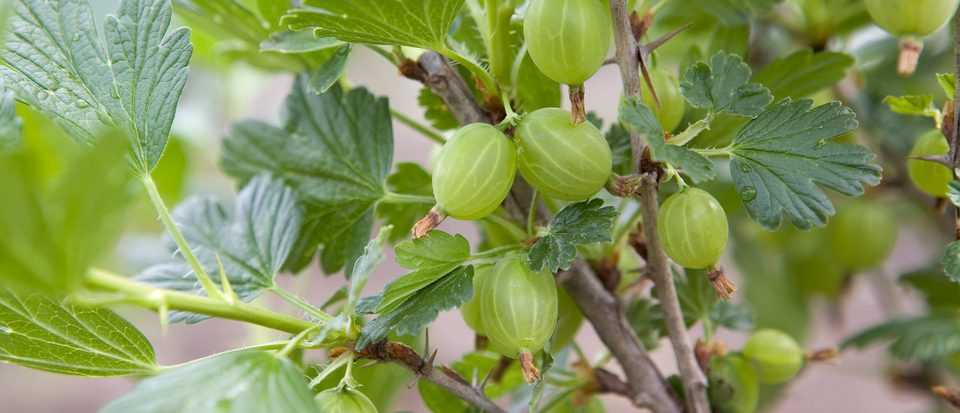
Gooseberries are a delicious and nutritious fruit that can be grown in your own backyard. Whether you are an experienced gardener or just starting out, learning how to plant gooseberries properly is essential for their successful growth. In this article, we will cover the steps and tips to help you get started on growing your own gooseberries.
Step 1: Choose the right variety
Before you start planting gooseberries, it is important to choose the right variety for your climate and soil conditions. Gooseberries come in a range of colors, sizes, and flavors, so make sure to do your research and select a variety that best suits your preferences and growing conditions. Some popular varieties include ‘Hinnomaki Red,’ ‘Captivator,’ and ‘Pixwell.’
Step 2: Prepare the hole
Once you have chosen the variety, the next step is to prepare the hole for planting. Gooseberries prefer well-draining soil, so make sure the area you choose has good drainage. Dig a hole that is twice as wide and deep as the root ball of the gooseberry bush. This will allow enough space for the roots to spread out and take hold.
Pro tip: It’s a good idea to add organic matter, such as compost or well-rotted manure, to the hole before planting. This will help improve the soil’s fertility and drainage, giving your gooseberry bush a healthy start.
Step 3: Planting the gooseberry bush
Now that the hole is prepared, it’s time to plant your gooseberry bush. Carefully place the root ball in the hole, making sure it is at the same depth as it was in the nursery container. Backfill the hole with soil, firming it gently around the roots as you go. Avoid planting the bush too deep, as this can hinder its growth and cause root rot.
Step 4: Watering tips
Proper watering is crucial for the establishment and growth of your gooseberry bush. After planting, give the bush a thorough watering to settle the soil and remove any air pockets around the roots. Water your gooseberry bush regularly, keeping the soil evenly moist but not waterlogged. During dry periods, increase the frequency of watering to ensure the plant does not become stressed.
Pro tip: Mulching around the base of the gooseberry bush can help conserve moisture and suppress weed growth. Apply a layer of organic mulch, such as wood chips or straw, around the plant, leaving a small gap around the stem to prevent rotting.
By following these steps and tips, you can ensure that your gooseberry bush will thrive and provide you with a bountiful harvest for years to come.
Understanding Gooseberries
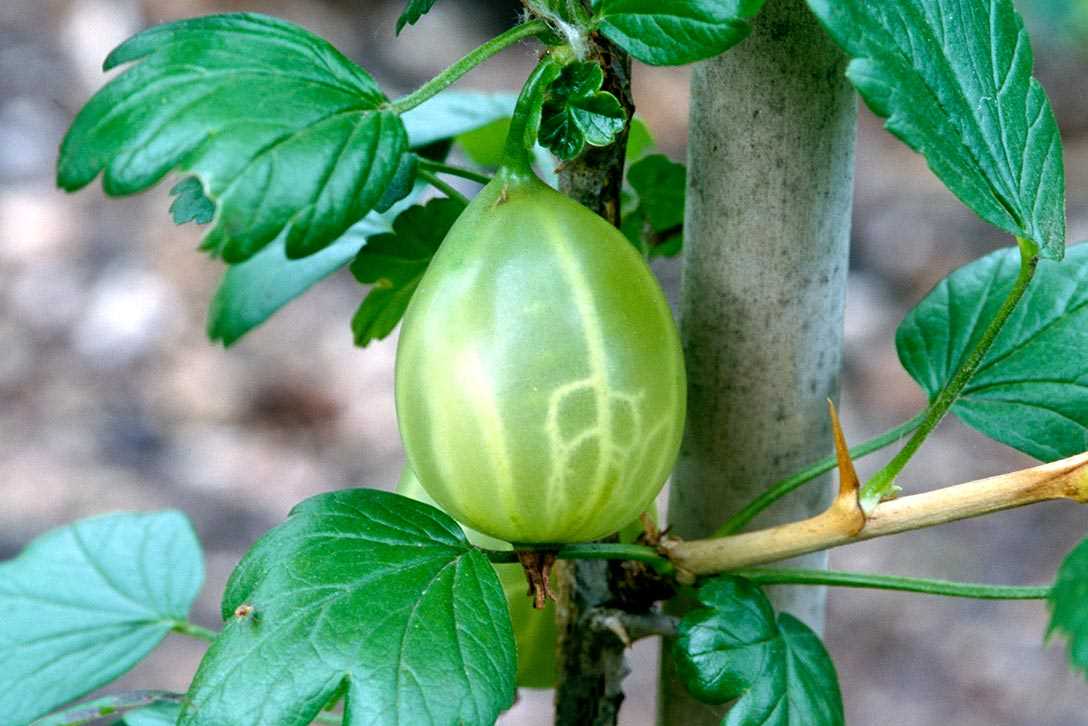

Gooseberries are small, nutritious fruits that belong to the genus Ribes and are native to Europe, Asia, and North America. They are closely related to currants and have a tart, tangy flavor. Gooseberries come in various colors, including green, red, and yellow, and can be enjoyed fresh, cooked, or used in a variety of culinary preparations.
Gooseberries are rich in vitamin C and other antioxidants, making them a healthy addition to your diet. They can boost your immune system, promote healthy skin, and help fight off diseases. One serving of gooseberries provides a significant amount of fiber, vitamin A, vitamin K, and manganese.
In terms of growing, gooseberry bushes are deciduous shrubs that can reach a height of up to 5 feet. They have thorny branches and produce small, elongated berries that are ready to harvest in late spring or early summer. Gooseberry plants are relatively low-maintenance and can be grown in a wide range of climates and soil conditions.
Varieties of Gooseberries
There are several different varieties of gooseberries available, each with its own unique characteristics. Some popular varieties include:
- Hinnonmaki Red: This variety produces sweet, juicy berries that are dark red in color.
- Pixwell: Pixwell gooseberries are known for their vigorous growth and large, pink berries.
- Invicta: Invicta gooseberries are green and slightly tart, making them perfect for culinary use.
Growing Gooseberries
When it comes to planting gooseberries, it’s important to choose a location with well-drained soil and full sun exposure. The plants should be spaced about 3-4 feet apart to allow for adequate airflow and prevent disease. Before planting, prepare the soil by removing any weeds and adding compost or organic matter to improve fertility.
Gooseberries are self-fertile, but planting multiple varieties can increase cross-pollination and fruit production. Once planted, water the bushes regularly, especially during dry periods. Gooseberries have shallow roots, so it’s important to provide consistent moisture for optimal growth.
Pruning is also essential for maintaining healthy gooseberry plants. In late winter or early spring, remove any dead or damaged branches and thin out the center of the bush to improve airflow. This will help reduce the risk of disease and encourage better fruit production.
In conclusion, gooseberries are delicious and nutritious fruits that can be easily grown in your own backyard. With proper care and attention, you can enjoy a bountiful harvest of these tangy berries year after year.
Types of Gooseberries
There are several different types of gooseberries, each with its own unique characteristics and flavors. Here are some popular varieties:
Green Gooseberries: These gooseberries are the most common and widely available. They have a tart flavor and are often used in pies, jams, and desserts. The berries are green when they are unripe and turn yellow or red when they ripen.
Red Gooseberries: As the name suggests, these gooseberries have a red color when they are ripe. They are sweeter than green gooseberries and can be eaten fresh or used in various culinary preparations. Red gooseberries are often used in making sauces, jellies, or preserves.
White Gooseberries: White gooseberries are less common but equally delicious. They have a mild and sweet flavor, similar to grapes. These berries are usually eaten fresh or used in salads and fruit compotes.
In addition to these main types, there are also a few hybrid varieties that offer a mix of flavors and colors. Some popular gooseberry hybrids include:
| Hybrid Variety | Description |
|---|---|
| Pixwell | Produces bright red berries with a sweet and tangy flavor. |
| Invicta | Yields large green berries with a tart and zesty taste. |
| Hinnomaki Red | Produces medium-sized red berries that are sweet and juicy. |
When choosing a gooseberry variety, consider your taste preferences and the intended use of the berries. Whether you prefer tart green gooseberries or sweet red ones, there’s a variety out there that will suit your culinary needs!
Benefits of Growing Gooseberries
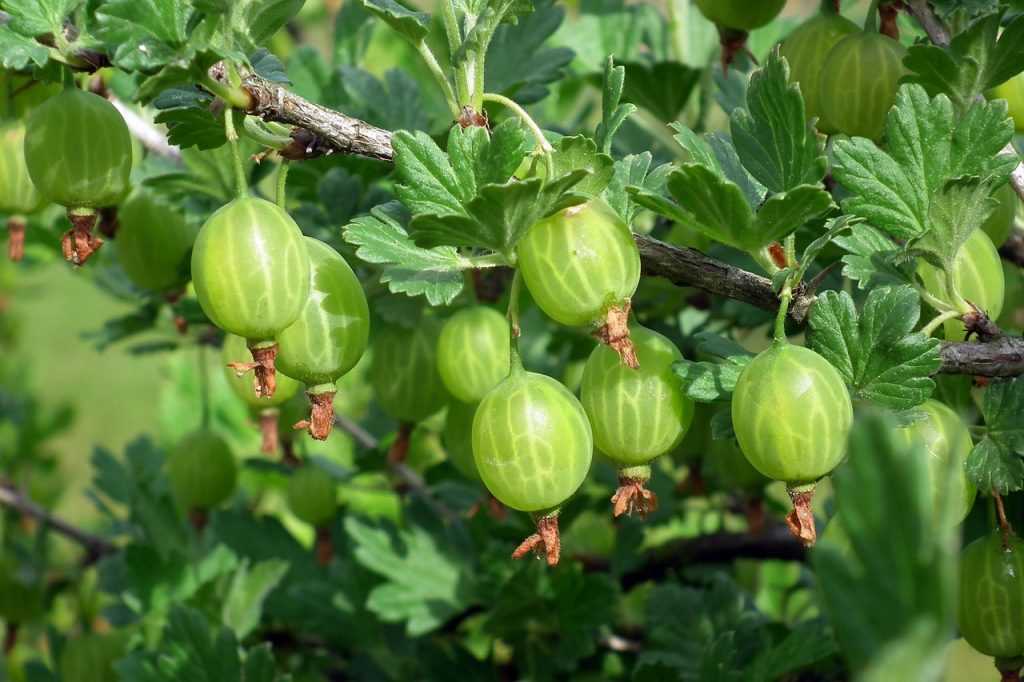

Gooseberries are a versatile and rewarding fruit to grow in your garden. Here are some of the benefits of growing gooseberries:
- Rich in Nutrients: Gooseberries are packed with essential vitamins and minerals, such as vitamin C, vitamin A, potassium, and fiber. They are a great addition to a healthy diet.
- Delicious Flavor: Gooseberries have a unique sweet and tangy flavor that adds a burst of taste to various dishes. They can be eaten fresh, used in jams, jellies, pies, sauces, and even added to savory dishes.
- Low-Maintenance: Gooseberry bushes are relatively easy to grow and require minimal care. They are tolerant of different soil conditions and can withstand cold temperatures, making them suitable for a wide range of climates.
- Attractiveness: Gooseberry bushes feature attractive foliage and delicate flowers in spring, adding beauty to your garden. The fruits themselves come in a variety of colors, including green, yellow, red, and purple.
- Health Benefits: Consuming gooseberries can offer various health benefits. They are known for their antioxidant properties, which can help protect against diseases and promote overall well-being.
- Preserving and Storage: Gooseberries are excellent for preserving and can be stored for extended periods. You can make delicious gooseberry jams, jellies, and sauces, allowing you to enjoy the fruit all year round.
In conclusion, growing gooseberries not only provides you with a tasty and nutritious fruit but also adds beauty to your garden and offers various health benefits. Don’t miss out on the opportunity to grow this versatile fruit in your backyard!
Choosing the Right Location
When planting gooseberries, it is essential to choose the right location to ensure optimal growth and fruit production. Here are some factors to consider when selecting a spot for your gooseberry plants:
1. Sunlight
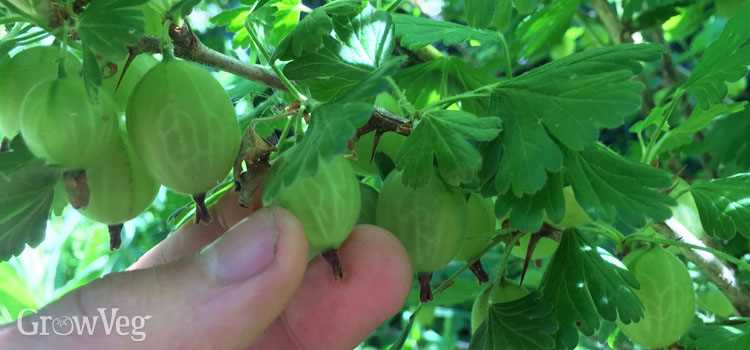

Gooseberries thrive in full sun to partial shade conditions. Choose a location that receives at least 6-8 hours of sunlight each day. Avoid planting them in areas with excessive shade, as this can hinder their growth and fruit production.
2. Soil Quality
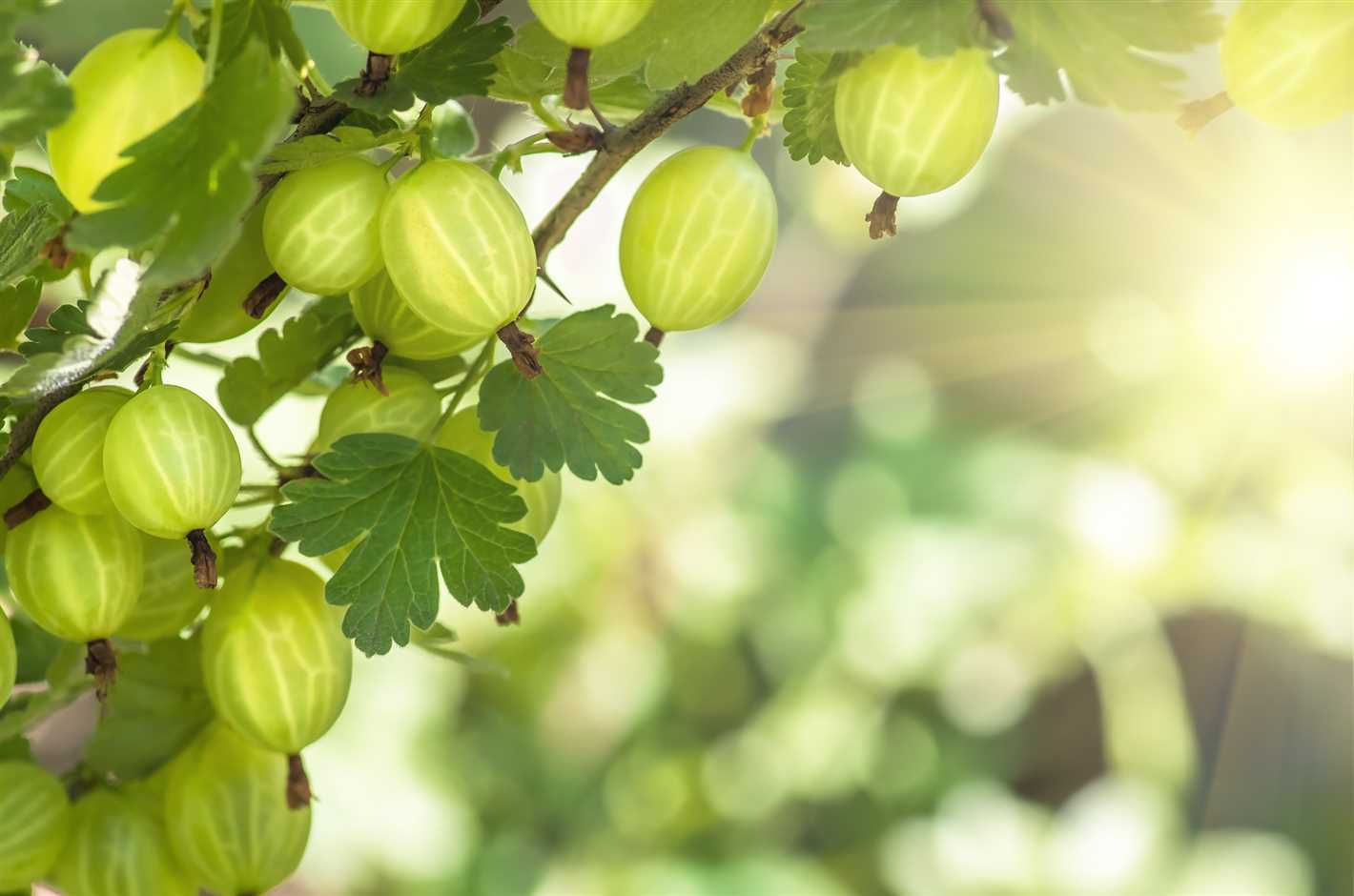

Gooseberries prefer well-draining soil rich in organic matter. Test the soil pH and make sure it falls within the range of 6.0 to 6.5 for optimal growth. If the soil is too acidic, add lime to raise the pH level. If it is too alkaline, add sulfur or peat moss to lower the pH.
3. Air Circulation
Gooseberries benefit from good air circulation, which helps prevent the development of fungal diseases. Avoid planting them in areas with poor air movement or where they may be overcrowded.
4. Protection from Wind
Although gooseberries need air circulation, they also require protection from strong winds that can damage their delicate branches. Plant them near a fence, building, or other windbreaks to shield them from strong gusts.
5. Accessibility to Water
Make sure the chosen location has access to a water source, as gooseberries require consistent moisture for optimal growth. Planting them near a hose or irrigation system can make watering more convenient.
By considering these factors and choosing the right location, you can provide your gooseberry plants with the best conditions for healthy growth and bountiful fruit production.
Ideal Sun Exposure for Gooseberries
When it comes to growing gooseberries, providing them with the ideal sun exposure is crucial for their growth and fruit production. Gooseberries thrive in full sun to partial shade conditions, with at least 6 hours of direct sunlight per day being the minimum requirement.
Full Sun:
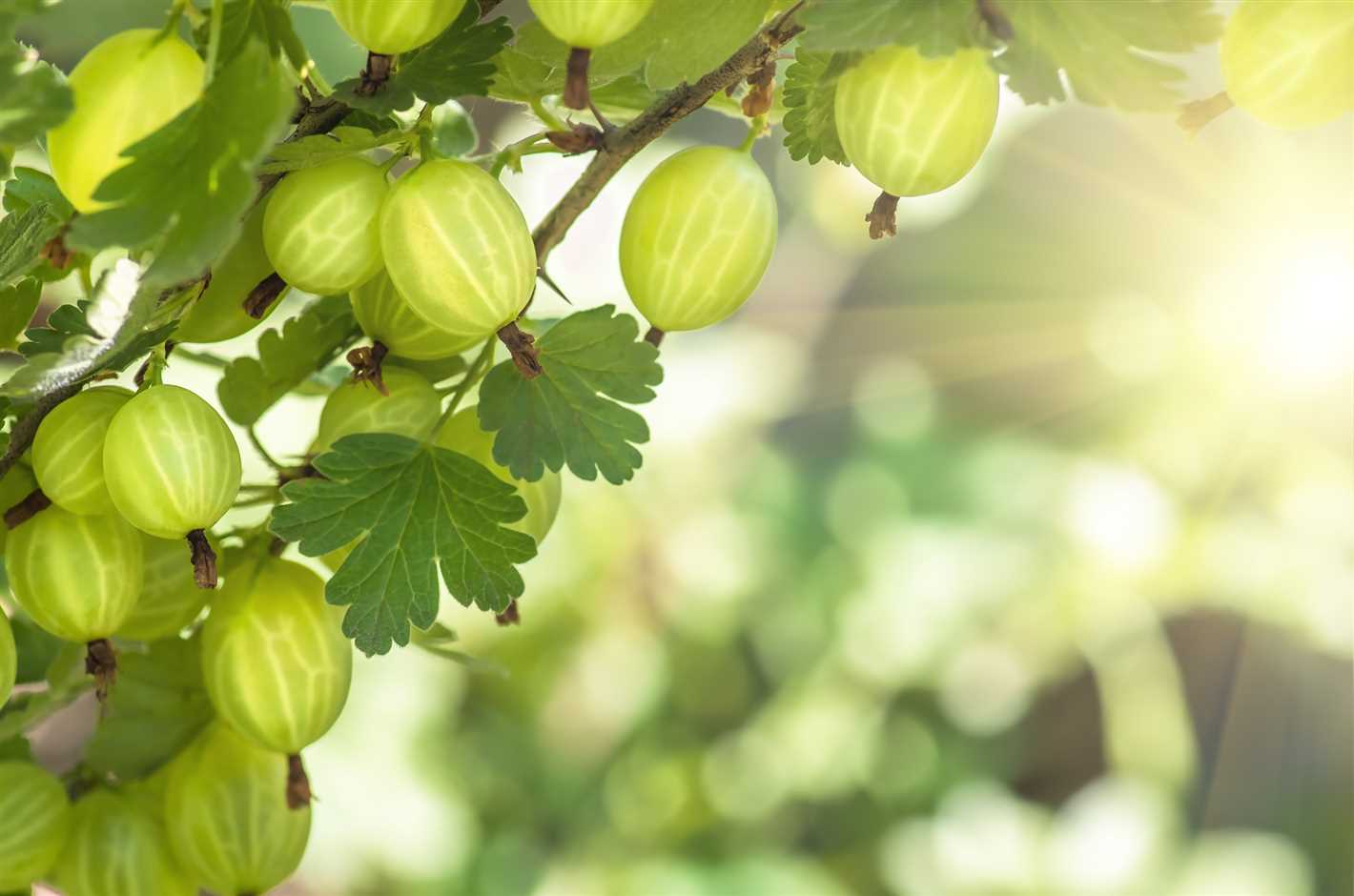

Planting gooseberries in a location that receives full sun exposure is highly recommended. Full sun means that the plants receive at least 6 to 8 hours of direct sunlight per day. This exposure to sunlight helps the plants to produce abundant fruit and also promotes a strong, healthy growth.
Partial Shade:


If you don’t have a spot that receives full sun all day, you can opt for a location with partial shade. Gooseberries can tolerate some shade, but it’s important to keep in mind that they still need a good amount of sunlight to thrive. Choose a spot that receives at least 4 to 6 hours of direct sunlight, preferably in the morning or afternoon when the sun is not as intense.
Shade:
Avoid planting gooseberries in full shade as they won’t receive enough sunlight to grow and produce fruit. Lack of sunlight can lead to weak, leggy plants that produce subpar fruit or no fruit at all. If you have a shady garden, consider planting other shade-tolerant plants instead.
It’s also worth mentioning that the ideal sun exposure for gooseberries can vary depending on your climate and the specific variety you are growing. Some varieties may tolerate more shade than others. Consult the specific planting instructions for your chosen variety or seek advice from a local gardening expert for the best results.
Soil Requirements for Gooseberries
Gooseberries thrive in well-drained soil that is rich in organic matter and has a pH level of 5.5 to 7.0. It is important to prepare the soil before planting gooseberries to provide them with the best growing conditions.
1. Soil pH: Gooseberries prefer slightly acidic to neutral soil. You can test the pH level of your soil using a soil testing kit available at garden centers. If the pH is below 5.5, you can add agricultural lime to raise it. If it is above 7.0, you can add sulfur or peat moss to lower the pH.
2. Soil Drainage: Good drainage is crucial for gooseberries as they are prone to root rot in waterlogged soil. Ensure that the planting site has well-drained soil so that excess water can easily drain away. If your garden soil has poor drainage, you can improve it by adding organic matter such as compost, well-rotted manure, or peat moss.
3. Organic Matter: Gooseberries benefit from soil that is rich in organic matter. Organic matter improves soil fertility, water retention, and drainage. You can improve the soil’s organic matter content by adding compost or well-rotted manure before planting gooseberries. Spread a layer of organic matter on top of the soil and mix it in using a garden fork or spade.
4. Nutrient Content: Gooseberries require adequate nutrients for healthy growth. Before planting, you can enrich the soil with balanced fertilizer or a slow-release organic fertilizer. Follow the manufacturer’s instructions for application rates.
5. Soil Texture: Gooseberries prefer loamy soil that is rich in organic matter. Loamy soil has a good balance of sand, silt, and clay, allowing for both drainage and water retention. If your soil is sandy or clay-heavy, you can improve its texture by adding organic matter and working it into the top few inches of soil.
6. Mulching: After planting gooseberries, apply a layer of organic mulch around the base of the plants. Mulch helps to conserve moisture, suppress weeds, and regulate soil temperature.
By ensuring the soil meets these requirements, you can provide your gooseberries with the ideal growing conditions they need to thrive and produce a bountiful harvest.
Preparing the Planting Hole
Properly preparing the planting hole for your gooseberries is essential to ensure their healthy growth and establishment. Follow these steps to create an ideal planting environment:
- Choose a suitable location for planting your gooseberries. They prefer well-drained soil with a pH level between 5.5 and 7.0. Ensure the area receives full sun or partial shade.
- Measure the root ball or container of your gooseberry plant. Dig a hole that is about twice the width and depth of the root ball, ensuring there is enough space for the roots to spread out.
- Remove any weeds or grass from the area around the planting hole. This will prevent competition for nutrients and water.
- Loosen the soil at the bottom of the hole using a garden fork or shovel. This will help the roots penetrate the soil more easily and establish themselves.
- Mix organic matter, such as compost or well-rotted manure, into the excavated soil. This will improve soil fertility and drainage.
- Place the gooseberry plant in the hole, ensuring that it is at the same level as it was in the container or nursery. Gently backfill the hole with the amended soil, firming it gently around the roots as you go.
- Water the newly planted gooseberry thoroughly to settle the soil and eliminate any air pockets. Provide enough water to moisten the root ball and the surrounding soil.
This carefully prepared planting hole will give your gooseberries a strong start and set them on the path to healthy growth and a bountiful harvest.
Digging the Right Size Hole
When planting gooseberries, it is important to dig the right size hole to ensure the plant has enough space to grow and establish its roots. The size of the hole will depend on the size of the gooseberry plant you are planting.
Follow these steps to dig the right size hole:
- Measure the size of the gooseberry plant’s rootball. This will give you an idea of how wide and deep the hole should be.
- Choose a planting location in your garden that receives full sun and has well-drained soil.
- Using a shovel or garden fork, dig a hole that is approximately twice as wide and deep as the rootball of the plant.
- Remove any large rocks or debris from the hole.
- If the soil in your garden is heavy clay or poor draining, consider adding organic matter such as compost or well-rotted manure to the hole to improve the soil structure and drainage.
Once the hole is dug, you are ready to plant the gooseberry plant. Remember to handle the plant gently and position it in the hole so that the top of the rootball is level with the soil surface. Fill in the hole with soil, firming it gently around the roots. Water the plant thoroughly after planting to settle the soil and ensure good root-to-soil contact.
By digging the right size hole, you are providing your gooseberry plant with the best possible start and ensuring its long-term success in your garden.
Adding Amendments to the Soil
Before planting gooseberries, it’s important to prepare the soil and make sure it has the right nutrients to support healthy growth. Adding amendments to the soil can improve its structure and fertility, ensuring optimal conditions for your gooseberry plants.
1. Organic Matter
One of the key amendments for the soil is organic matter. This includes compost, well-rotted manure, or leaf mold. Adding organic matter improves soil structure, drainage, and fertility, while also providing essential nutrients for the plants.
- Spread a layer of organic matter over the planting area, around 2-3 inches thick.
- Use a garden fork or tiller to incorporate the organic matter into the top 6-8 inches of soil.
- Avoid applying too much organic matter, as it can retain too much moisture and lead to root rot.
2. pH Adjustments
Gooseberries prefer slightly acidic soil with a pH between 6.0 and 6.5. If your soil is too alkaline, you can make adjustments using amendments such as sulfur or aluminum sulfate.
- Conduct a soil test to determine the current pH level of your soil.
- If the pH is too high, follow the instructions on the chosen amendment and apply it to the soil accordingly.
- Avoid adding too much amendment at once, as it can lower the pH to extreme levels.
3. Nutrient Boosters
To ensure your gooseberries get the necessary nutrients, consider adding fertilizer or specific nutrient amendments to the soil.
- Choose a balanced fertilizer with equal or higher levels of nitrogen (N), phosphorus (P), and potassium (K).
- Follow the instructions on the fertilizer package to determine the appropriate amount to apply.
- Consider using slow-release fertilizers for long-term nutrient availability.
By adding amendments to the soil, you are giving your gooseberries the best growing conditions possible. Remember to thoroughly mix the amendments into the soil to ensure they are evenly distributed, and always water the plants after planting to help settle the soil and remove any air pockets.
Planting Gooseberries
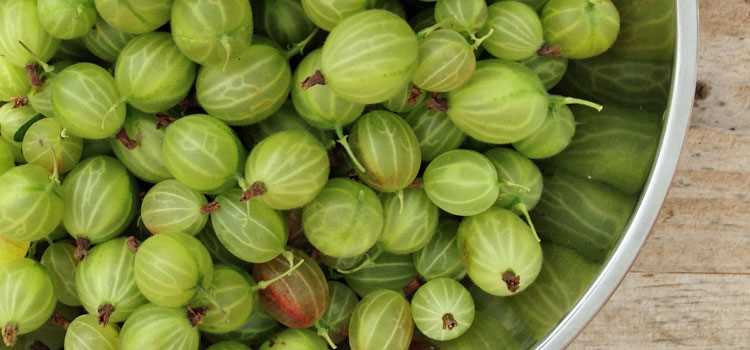

When it comes to planting gooseberries, there are a few important steps to follow to ensure their success. Here is a step-by-step guide on how to properly plant gooseberries:
1. Choose a suitable location
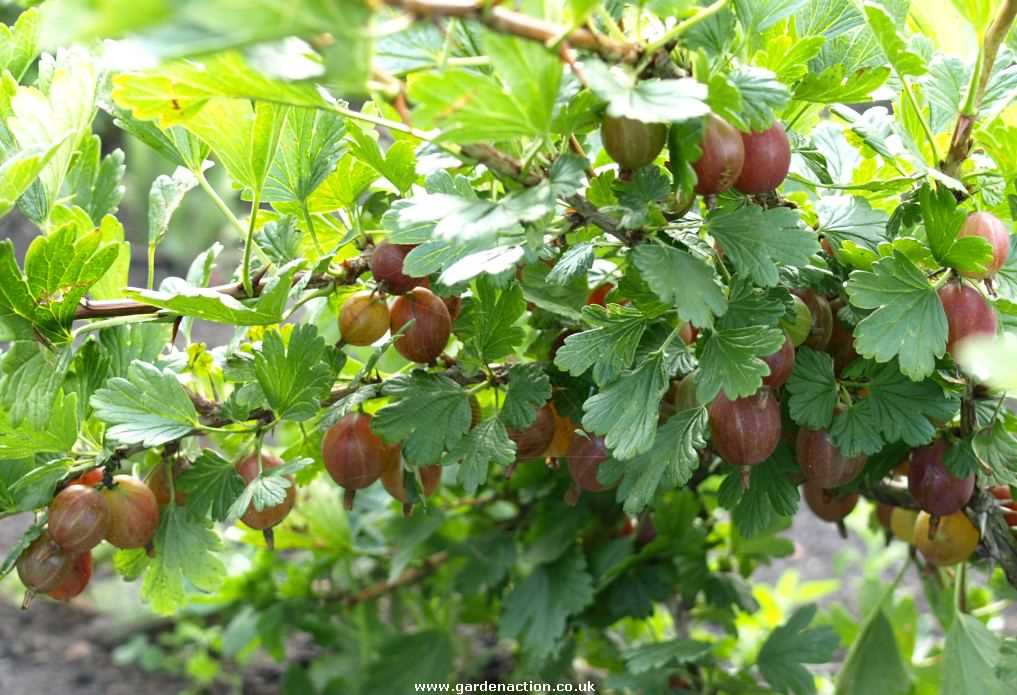

Gooseberries thrive in well-draining soil that receives full sun to partial shade. Select a site that provides at least 6-8 hours of sunlight daily. Avoid areas with strong winds, as gooseberry bushes can be sensitive to wind damage.
2. Prepare the soil
Prior to planting, prepare the soil by removing any weeds, rocks, or debris. Incorporate organic matter, such as compost or well-rotted manure, to improve the soil’s fertility and drainage. Gooseberries prefer slightly acidic soil with a pH between 5.5 and 7.
3. Dig the planting hole
Dig a planting hole that is wide and deep enough to accommodate the gooseberry bush’s root system. The hole should be approximately twice the size of the root ball. This will allow the roots to spread out and establish themselves more easily.
4. Place the gooseberry bush
Place the gooseberry bush into the planting hole, making sure that it is at the same level as it was in the container or nursery. The bud union, which is the swollen area where the bush was grafted onto the rootstock, should be slightly above the soil surface.
5. Backfill and firm the soil
Backfill the hole with soil, gently firming it around the roots to eliminate any air pockets. Be careful not to compact the soil too much, as this can hinder water drainage. Water the newly planted gooseberry bush deeply to settle the soil and encourage root growth.
6. Mulch and water
Apply a layer of organic mulch around the base of the gooseberry bush to help retain moisture, suppress weeds, and regulate soil temperature. Water the plant regularly, especially during hot and dry periods, to keep the soil consistently moist but not waterlogged.
7. Prune and train


After planting, prune the gooseberry bush to remove any damaged or crossing branches. This will help promote a healthy, open center and improve air circulation around the plant. Train the main stems to an open, fan-shaped or bush shape as desired.
By following these steps, you can ensure that your gooseberry bushes have the best start in their new home and will provide you with a bountiful harvest for years to come!
Question-answer:
What are gooseberries and why should I plant them?
Gooseberries are small round berries that are rich in vitamins and antioxidants. They have a tart and sweet flavor and can be used in various culinary dishes. Planting gooseberries in your garden can provide you with a fresh supply of these nutritious berries.
When is the best time to plant gooseberries?
The best time to plant gooseberries is in the spring, after the last frost has passed. This allows the plants to establish their root systems before the heat of summer.
How do I properly prepare the hole for planting gooseberries?
To properly prepare the hole for planting gooseberries, you should dig a hole that is slightly larger and deeper than the root ball of the plant. Mix in some organic matter, such as compost or well-rotted manure, into the soil to improve drainage and fertility. Place the plant in the hole, making sure the crown is level with the soil surface, and backfill with soil. Firmly press down the soil around the plant to eliminate any air pockets.
Do gooseberries require a lot of water?
Yes, gooseberries require regular watering, especially during dry periods. It’s important to keep the soil evenly moist, but not waterlogged. Deep watering once a week is generally sufficient for established plants. However, if you live in an area with hot and dry summers, you may need to increase the frequency of watering.
Can gooseberries tolerate full sun or do they prefer partial shade?
Gooseberries can tolerate full sun, but they also do well in partial shade. If you live in an area with hot summers, providing some afternoon shade can help protect the plants from excessive heat and sunburn. However, they still need at least six hours of direct sunlight a day to produce a good crop of berries.
How long does it take for gooseberries to bear fruit?
Gooseberries typically start bearing fruit two to three years after planting. The exact timing can vary depending on the variety of gooseberry, growing conditions, and how well the plant is cared for. It’s important to be patient and provide the plants with the necessary care, such as proper watering, pruning, and fertilizing, to ensure a bountiful harvest.







